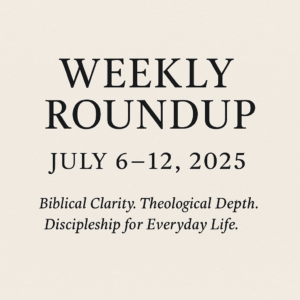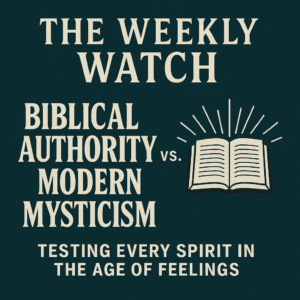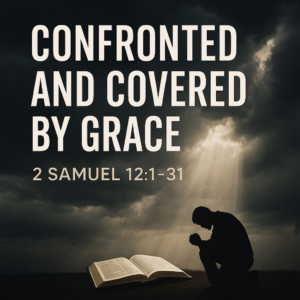⏱️ Estimated Reading Time: 8 min read
Two of the Gospel narratives give an account of the happenings surrounding the birth of Jesus. Matthew 1-2 tells about Joseph and includes the story of the Magi from the East. Luke 1-2 does not mention the Magi but focuses on Mary and others—including Elizabeth, Zacharias, the shepherds, Simeon, and Anna. Anna praised the Lord for the Incarnation of the Lord Jesus.
Various people have claimed that Matthew and Luke contradict each, and the narratives of the birth of Jesus seem to be in opposition to each other. The details provided by Matthew and Luke, as we will see, are easily reconciled and do not contradict each other.
Details That are Agreed Upon by Matthew and Luke:
- Jesus was born of a virgin (Matthew 1:18, 23, 25; Luke 1:27).
- Mary and Joseph lived in Nazareth, a town in Galilee (Matthew 2:23; Luke 1:26; 2:4).
- Jesus was born in Bethlehem (Matthew 2:1; Luke 2:4-7).
- Mary and Joseph returned to Nazareth after Jesus’ birth (Matthew 2:23; Luke 2:39).
Details Unique to Matthew or Luke:
- The Magi visit Jesus (Matthew 2:1-12).
- Joseph and Mary flee Egypt to escape Herod’s cruelty (Matthew 2:13-18).
- A group of shepherds visit Jesus in the manger (Luke 2:8-20).
- Joseph and Mary make a trip to the temple in Jerusalem to fulfill the Law (Luke 2:22-39).
The Central Claim of Contradiction in the Narratives
At the heart of the claim of a contradiction in the birth narratives are Matthew 2:21-23 and Luke 2:39. According to critics, Luke, who says nothing about the flight to Egypt, indicates that Jesus was taken directly from the temple. Matthew, according to the critics, does not mention the temple observances and says that Jesus was taken to Nazareth directly from Egypt.
Luke never says that Joseph and Mary did not go to Egypt and didn’t comment on that event. Matthew never mentions the shepherds of the nativity. Neither Matthew nor Luke claim they are penning an exhaustive account of every detail surrounding the birth of Jesus.
The best way to understand Matthew’s and Luke’s narratives is to place the flight to Egypt after Jesus’ appearance in the temple. This places Joseph and Mary in Bethlehem after Jesus’ birth and stayed at the “house” of Matthew 2:11.
Luke 2:39 doesn’t say that they immediately returned to Galilee and doesn’t specify how much time has elapsed here. Instead, he says that after they visited the temple, Joseph and Mary settled in at Nazareth, which means it could have been days or months. If we observe the details of the flight to Egypt in Luke 2:39, we discover the following:
- After visiting the temple, Joseph and Mary returned to Bethlehem (to a house they’d found a room in after Jesus’ birth in the stable).
- Simeon and Anna began spreading the news that they had seen the Messiah in Jerusalem (Luke 2:25-38).
- Sometime later, the Magi arrived at Jerusalem and confirmed the news on the street that the Messiah had been born (Matthew 2:1-2).
- Herod sends the Magi on to Bethlehem, where they find Jesus (Matthew 2:3-11).
- The Magi return home a different way, and Joseph is warned in a dream to flee to Egypt (Matthew 2:12-13).
- Herod figures out that the Magi have disregarded his wishes, and he orders the slaughter of all male children, two years old and younger, in/near Bethlehem (Matthew 2:16). The “two-year” computation indicates that Jesus could have already been that old.
- Herod dies in 4 B.C.
- Joseph brings his family back from Egypt (Matthew 2:19-21).
- Out of fear of Herod’s son, Joseph changes his plan to settle in Bethlehem and instead moves back to Galilee (Matthew 2:22-23).
Nothing in the chronology mentioned above contradicts Matthew or Luke.
Some critics claim to find another supposed contradiction in the genealogies associated with the narratives of Jesus’ birth. Matthew 1:16, for example, says that Joseph’s father was Jacob. Luke 3:23 says that Joseph’s father was Heli. The best response to this is that Luke is recording Mary’s genealogy, and Matthew is recording Joseph’s.
All the Differences in the Gospels Can Be Harmonized
Four different men wrote the Gospels to four different audiences. The previous sentence is important because the Gospels include different details concerning the life of Jesus. Even so, their writing was inspired by the Holy Spirit, guaranteeing that what they wrote was the truth. So, while there are differences, they can all be harmonized. The narratives of Jesus’ birth found in Matthew and Luke are not contradictory but complementary.
Supposed Bible Contradictions and Trusting the Bible
I’ll never forget the conversation I had with a friend who had come home from Bible college. He told me during our discussion that apparent Bible contradictions shook his faith and confidence in the Bible. Growing up in the same church, we were encouraged to study the Bible and were equipped to do so from middle school on. Questions were encouraged, and I remember fondly studying systematic theology in high school. Many teenagers today don’t have this opportunity. For me, it fueled a love for the Lord, the local Church, and the Word of God.
I’ve seen many people come home from Bible college or go through seminary and come out on the other side, questioning their faith. As we considered apparent Bible contradictions, it’s important to say there are good answers to questions people have from God’s Word. The question isn’t whether there are good answers to the questions being asked, but whether people ask the right questions from the biblical text.
One example of asking the wrong questions and getting the wrong answers is from liberal Protestantism. Decades ago, most mainline denominations abandoned the inerrancy and infallibility of Scripture. These denominations thought they could continue affirming the core tenets of Christianity while they rejected inerrancy and infallibility. Such a rejection, however, leads to a denial of orthodoxy and other matters. For these mainline denominations it all began with questioning biblical sexual ethics and other teachings, which led to rejecting the atonement and other critical teachings.
These mainline denominations had to question those core biblical teachings for consistency’s sake. To deny the Word of God is without error (inerrancy) and without the possibility of error (infallibility) is to deny that the people of God have a trustworthy revelation from the Lord. When the people of God reject the authority of God’s Word, they have stopped adhering to biblical Christianity and begun to adhere to another religion entirely, as J. Gresham Machen said in his classic book, Christianity and Liberalism.
As we study the Scripture, everything mentioned in the previous two paragraphs is demonstrated to be critically important because it will affect how we deal with the supposed contradictions in the Scripture. If we think that the Bible is full of errors and fairytales, no matter how good the answer is, it won’t matter. But if we believe the Bible is without error and without the possibility of error, then we will come to the Scriptures, looking to unearth them by asking questions and enabling our faith to grow in and through Christ.
The Bible didn’t fall from the sky on a parachute but took many different writers centuries to give us the complete works of Scripture. Verbal-plenary inspiration doesn’t mean the people of God won’t find it difficult to reconcile biblical texts. The Bible is a divine book, but it is also a human book, not in that it is full of human errors, but in that it tells the human stories of the Lord’s work in their lives. No two people write in the same way, and no two human beings report their perspectives on the same event(s) identically. Two people can accurately represent the same event without covering the same details. This is the issue, as we’ve seen in Matthew 2 and Luke 2. Differences do not mean contradiction. They mean that the author is putting more stress on one point, while another writer comes along and emphasizes a different point. Together these details fill in and tell the whole story.
Parting Encouragement
Today you might be questioning the Bible because of contradictions in Scripture. Dear Christian, you have a reliable, sufficient, and trustworthy Bible. You can open your Bible and ask all the hard questions you want of it, but asking questions apart from confidence in the Bible will lead you to be like my friend, who eventually left the church. Instead, I encourage you to wrestle with what the Bible teaches, not from a place of unbelief but belief in the Word. God has given you a Word in the Scriptures. God is faithful to His Word because He is a faithful and trustworthy God. Therefore, you can trust the Word because it reveals His holy, just, and perfect character. Please, dear friend, trust the Lord, read the Word, and grow in His grace.
Dave Jenkins is happily married to his wife, Sarah. He is a writer, editor, and speaker living in beautiful Southern Oregon. Dave is a lover of Christ, His people, the Church, and sound theology. He serves as the Executive Director of Servants of Grace Ministries, the Executive Editor of Theology for Life Magazine, the Host and Producer of Equipping You in Grace Podcast, and is a contributor to and producer of Contending for the Word. He is the author of The Word Explored: The Problem of Biblical Illiteracy and What To Do About It (House to House, 2021), The Word Matters: Defending Biblical Authority Against the Spirit of the Age (G3 Press, 2022), and Contentment: The Journey of a Lifetime (Theology for Life, 2024). You can find him on Facebook, Twitter, Instagram, Youtube, or read his newsletter. Dave loves to spend time with his wife, going to movies, eating at a nice restaurant, or going out for a round of golf with a good friend. He is also a voracious reader, in particular of Reformed theology, and the Puritans. You will often find him when he’s not busy with ministry reading a pile of the latest books from a wide variety of Christian publishers. Dave received his M.A.R. and M.Div through Liberty Baptist Theological Seminary.




